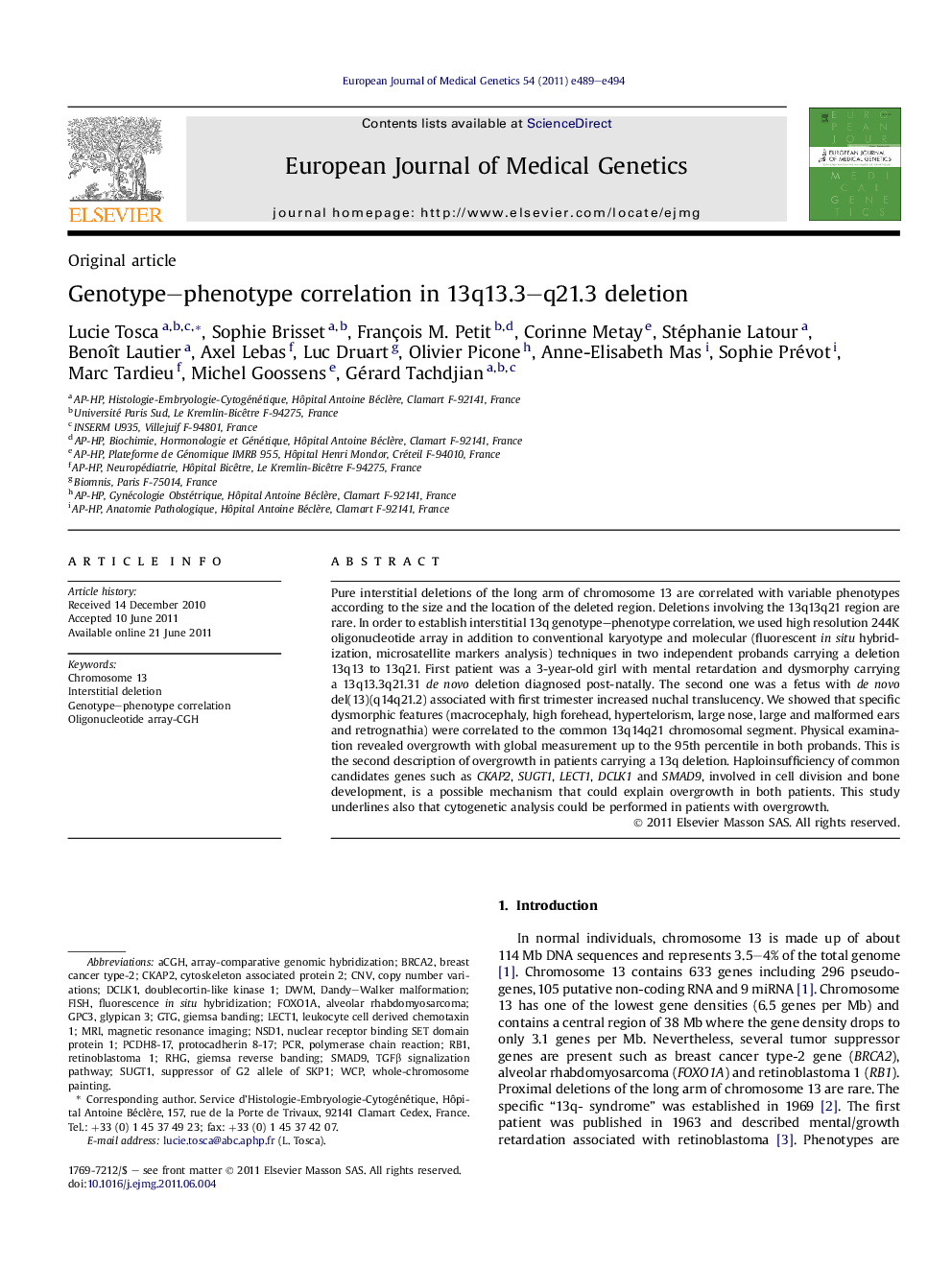| Article ID | Journal | Published Year | Pages | File Type |
|---|---|---|---|---|
| 2814268 | European Journal of Medical Genetics | 2011 | 6 Pages |
Pure interstitial deletions of the long arm of chromosome 13 are correlated with variable phenotypes according to the size and the location of the deleted region. Deletions involving the 13q13q21 region are rare. In order to establish interstitial 13q genotype–phenotype correlation, we used high resolution 244K oligonucleotide array in addition to conventional karyotype and molecular (fluorescent in situ hybridization, microsatellite markers analysis) techniques in two independent probands carrying a deletion 13q13 to 13q21. First patient was a 3-year-old girl with mental retardation and dysmorphy carrying a 13q13.3q21.31 de novo deletion diagnosed post-natally. The second one was a fetus with de novo del(13)(q14q21.2) associated with first trimester increased nuchal translucency. We showed that specific dysmorphic features (macrocephaly, high forehead, hypertelorism, large nose, large and malformed ears and retrognathia) were correlated to the common 13q14q21 chromosomal segment. Physical examination revealed overgrowth with global measurement up to the 95th percentile in both probands. This is the second description of overgrowth in patients carrying a 13q deletion. Haploinsufficiency of common candidates genes such as CKAP2, SUGT1, LECT1, DCLK1 and SMAD9, involved in cell division and bone development, is a possible mechanism that could explain overgrowth in both patients. This study underlines also that cytogenetic analysis could be performed in patients with overgrowth.
